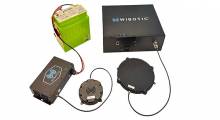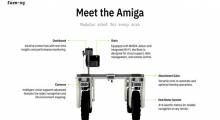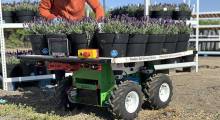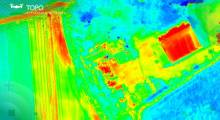As navigation, payload capacity, and artificial intelligence continue to improve for aerial drones, they can better serve precision agriculture. XAG Co. last week announced five new products at its annual conference in Guangzhou, China. They will be available for global sales in 2022.
Over the past eight years, XAG said it has scaled up its agricultural systems across 42 countries and regions to bridge the so-called digital divide in rural areas. The newly updated farming drones and robots not only enhance the company's six smart agriculture product lines, but also improve over previous models in terms of efficiency, precision, and safety, it added. They use “human-centered design” to help farmers, according to XAG.
The XAG Annual Conference 2021, which had the theme “Step into Agrifuture,” featured the new XAG P50 and P100 agricultural drones, the XAG M500 and M2000 remote sensing drones, and the updated XAG R150 unmanned ground vehicle (UGV).
XAG updates agricultural drones
The company said its P100 and V50 drones have new designs and task systems. The XAG P100 inherits the classical quadrotor structure with a 40 kg (88.1 lb.) effective payload, while the V50 adopts XAG's dual tilt-wing design to meet the needs of different users based on the farm size.
Both new drones have flying structures that can from task systems. This means that they can switch flexibly between the function of crop spraying, granule spreading, and field survey, said XAG. The platforms are easier to transport and maintain, increasing operational efficiency, the company claimed.
In the past, agricultural drones were unable to work without network signals because its autonomous flight relies on the real-time kinematic (RTK) signal of a 4G network. Now with the SuperX 4 Pro flight control system, the XAG P100 and V50 can conduct steady, high-accuracy operations, even around farms with weak Internet infrastructure, said XAG.
XAG has also upgraded the three task systems on both P100 and V50 to further improve efficiency and precision for various applications. The XAG RevoSpray 2.0 system includes “intelligent rotary atomization technology” that can accurately spray fine droplets between 40 and 600 μm and therefore greatly cut down the use of pesticides, it said.
The XAG RevoCast 2.0 system was redesigned with dual vertical centrifugal discs and a new smart screw feeder that can achieve a broadcast efficiency of 80 kg (175 lb.) of urea per minute.
In addition, XAG said its RealTerra 2.0 mapping module can enable a drone to survey a maximum area of 13 hectares (32.1 acres) per sortie in farmland and orchard. It supports real-time map stitching and is able to generate high-definition (HD) field map upon landing.
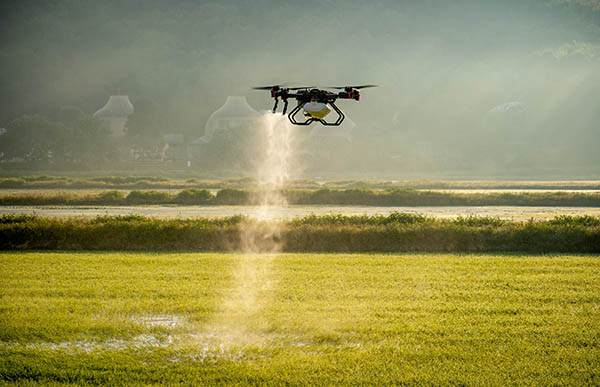
UGV includes self-driving advances
Based on its accumulated experience in autonomous driving and AI training, XAG has made further upgrades to its R150 UGV. The company described the new XAG R150 as a “scalable open payload platform” that can be loaded with different modules for high-precision crop spraying, fertilization, and mowing.
The RevoMower 2.0 system is designed to facilitate grass cutting on complex terrains such as farmland, mudflats, and orchards. With 6-kilowatt cutting power and a dual-blade structure, XAG R150 can control weeds and handle small shrubs. Users will no longer need to sit on a manual driving mower and suffer from loud noise, dust, and mosquitoes, said XAG.
In addition, the company said its HydraulicSpray accessory for the R150 allows users to rapidly assemble liquid pumps and pressure spray nozzles for crop protection in various farming landscapes.
The SuperX 4 Pro Control System allows XAG R150 to drive fully autonomously for a longer duration, said XAG. Using binocular vision and MMV 4D imaging radar, it can perform auto-location of field ridges and visual tracking while automatically avoiding obstacles such as trees.
Remote sensing drones offer deeper insights
In addition to precision operation tools, farmers need efficient ways to obtain field information and crop growth status for scientific decision-making, said XAG. The company said it released the M500 and M2000 remote sensing drones to address different needs for mapping in rural areas and help reduce labor costs.
The XAG M500 follows the light and foldable design of the previous XMission. It supports four types of gimbal cameras with different megapixels and wavebands for quick farmland mapping and crop scouting.
By taking HD images and generating digital field maps, the XAG M500 can help farmers quantify field conditions and indicators of crop growth, including irrigation, germination rate, crop density and height, pest diseases, and estimated crop yield, the company said.
The XAG M2000 is designed for large-scale and high-frequency farm surveys. The company said it is its first-ever electric vertical take-off and landing (EVTOL), fixed-wing flight platform that can be deployed at any spot and take off without site constraints. Equipped with an intelligent fast-charging battery, XAG M2000 can fly up to 90 minutes in a single sortie and map an area of up to 533 hectares (1,317 acres).
XAG demonstrates initial success in autonomous farming
XAG noted that digital transformation requires more than one technology. The company said it has introduced its smart agriculture ecosystem into the real-world autonomous farms throughout the full cycle of crop cultivation.
In April 2021, XAG launched the “Super Cotton Farm” in Northwest China, where two young farmers manage a 200-hectare (494.2 acre) cotton field with the help of drones, robots, and AI.
After the trial of one planting season, XAG said its Super Cotton Field has reduced labor costs by 60% and used 36% less pesticides than a traditional farm. The bumper harvest of cotton also demonstrated the scalability of an autonomous farm driven by digital technologies, it said.
XAG also launched the “Super Farm Project,” another new incubator for agricultural technologies, in Guangzhou at the end of 2021. The company said it hopes “to build the coolest and most hardcore autonomous farm model that can be replicated and promoted in the future.”
Article topics
Email Sign Up





